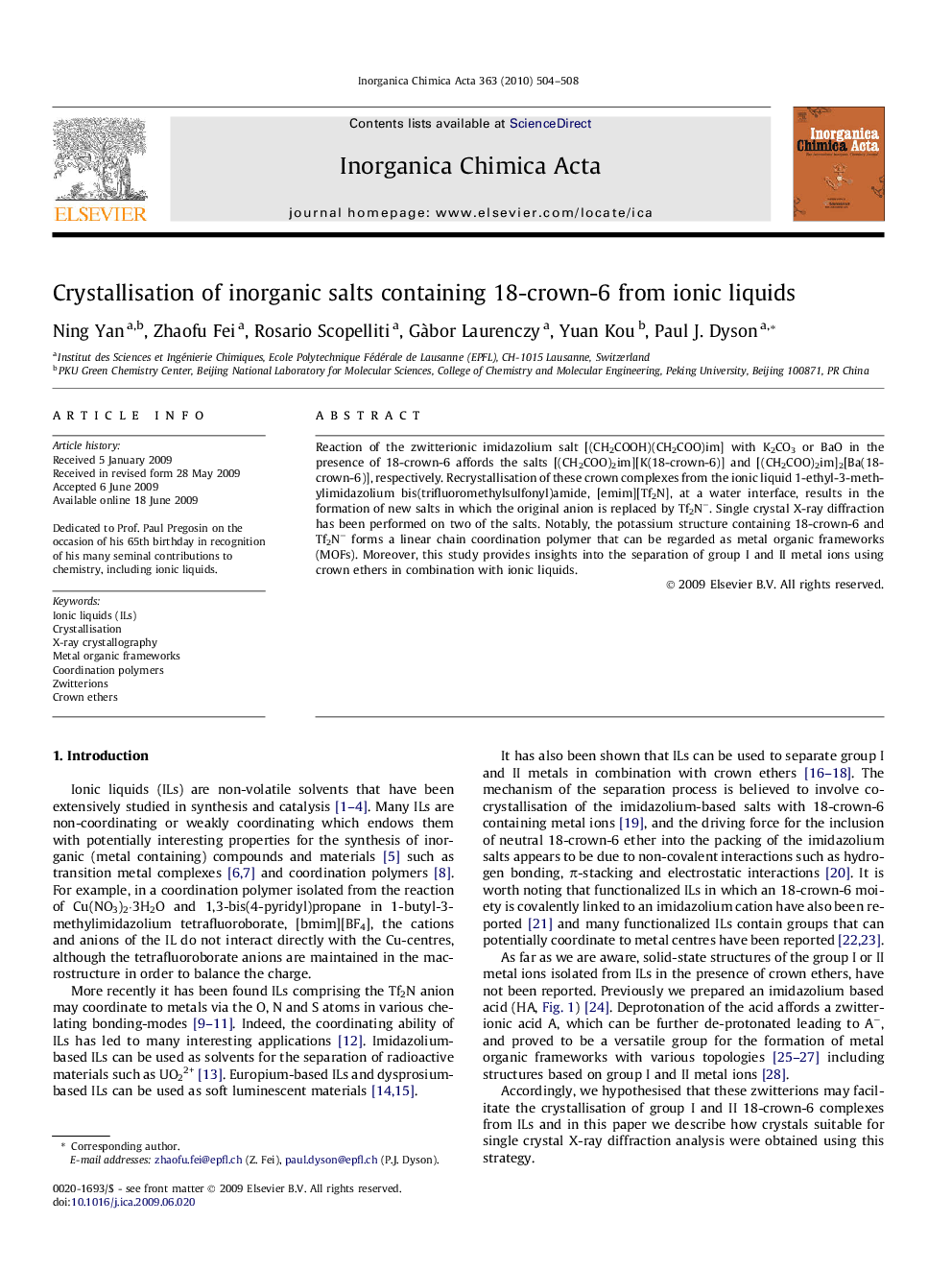| Article ID | Journal | Published Year | Pages | File Type |
|---|---|---|---|---|
| 1312644 | Inorganica Chimica Acta | 2010 | 5 Pages |
Reaction of the zwitterionic imidazolium salt [(CH2COOH)(CH2COO)im] with K2CO3 or BaO in the presence of 18-crown-6 affords the salts [(CH2COO)2im][K(18-crown-6)] and [(CH2COO)2im]2[Ba(18-crown-6)], respectively. Recrystallisation of these crown complexes from the ionic liquid 1-ethyl-3-methylimidazolium bis(trifluoromethylsulfonyl)amide, [emim][Tf2N], at a water interface, results in the formation of new salts in which the original anion is replaced by Tf2N−. Single crystal X-ray diffraction has been performed on two of the salts. Notably, the potassium structure containing 18-crown-6 and Tf2N− forms a linear chain coordination polymer that can be regarded as metal organic frameworks (MOFs). Moreover, this study provides insights into the separation of group I and II metal ions using crown ethers in combination with ionic liquids.
Graphical abstractReaction of the zwitterionic imidazolium salt [(CH2COOH)(CH2COO)im] with K2CO3 or BaO in the presence of 18-crown-6 affords the salts [(CH2COO)2im][K(18-crown-6)] and [(CH2COO)2im]2[Ba(18-crown-6)], respectively. Recrystallisation of these crown complexes from the ionic liquid 1-ethyl-3-methylimidazolium bis(trifluoromethylsulfonyl)amide, [emim][Tf2N], at a water interface, results in the formation of new salts in which the original anion is replaced by Tf2N−.Figure optionsDownload full-size imageDownload as PowerPoint slide
